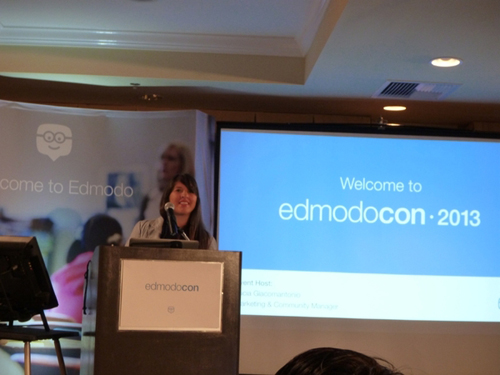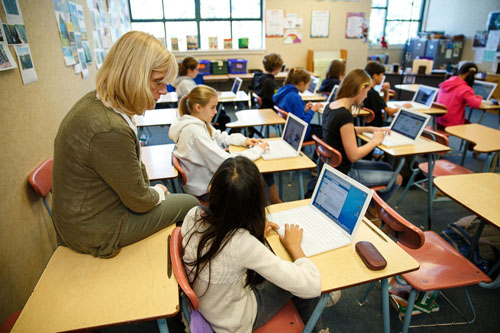Nach OECD-Bildungsindikatoren im Fokus, “Hochschulfinanzierungssysteme, die eine moderate Studiengebühren — in Verbindung mit Studienfördersysteme, die Darlehen mit einkommensabhängige Rückzahlung bieten und einkommensabhängige Zuschüsse — kann eine bessere Chance, die Förderung des Zugangs zu stehen, Gerechtigkeit, Abschluss, und positive Ergebnisse für Studenten.”
Die Probleme, um dieses Ziel zu erreichen oder etwas in der Nähe, es zu erreichen konfrontiert sind steigenden Kosten der Hochschulbildung, Immer mehr Studenten sich auf Darlehen für Schul bezahlen, eine wachsende Zahl von Studenten mit Schulden belastet (1 in 5 Amerikaner verfügen über Student Schulden belastet), und eng begrenzt Bildungsbudgets. Eine andere Frage, die von Familien aufgewachsen ist, “Wird die enormen Investitionen in Zeit und Geld, Studenten aufgefordert, im Hochschulbereich auszahlen lassen?” The graduate unemployment rate in the U.S. liegt nun bei einem schockierenden 14 Prozent, und nach einem aktuellen Bericht von Das Wall Street Journal es gab 284,000 Absolventen mit einem Bachelor-Abschluss oder höher arbeiten Mindestlohn Arbeitsplätze im vergangenen Jahr (nach oben 70 Prozent von vor einem Jahrzehnt). A recent McKinsey and Chegg report indicated that nearly half of college graduates polled regretted their decisions related to higher education. Difficult facts for anyone to swallow — somewhat tolerable when family can afford your education and support your ongoing living expenses indefinitely — grossly unfair to the majority of American families who can’t.
How does the cost of higher education in the United States compare to other countries? According to Global Higher Education Rankings (GHER) 2010, education costs in most countries range between 5 und 20 percent of median income. Norway’s higher education system is the least expensive, with educational costs at just over 2.2 percent of median income level. Dänemark, Schweden, Deutschland, France and Finland are all under 6 Prozent. Kanada, Neuseeland, Niederlande, England and Wales, and Latvia are all under 25 Prozent. By comparison, the United States is one of the most expensive markets, with education costs over 51 percent of median income. What about living costs? Surprisingly, the United States again is one of the most expensive markets in the survey, ranking third after Japan and Australia. [Data for the United States figures in the GHER research is based partly on data from the College Board’s annual Trends in College Pricing (for room and board) and partly from the International Comparative Higher Education Finance and Accessibility Project (for everything else).]
There are efforts underway to reduce higher education costs and improve graduation rates, but I believe the impact will be limited. Let’s not forget, we are starting at a very high level of education costs, d.h.. 51 percent of median income. We need a game changer or a disruptive innovation that could make a significant difference in affordability and accessibility for students. I believe that will ultimately be an online higher education model. There are challenges to overcome. Online education is still at the beginning of the quality curve with a way to go, but it will get there. We also know that the real power of technology lies in its ability to meet each individual’s unique learning requirements. That alone is making new converts in the world of education every day. It does not have to be bricks versus clicks. Blended learning models continue to expand and improve at every level of education. We can significantly lower student costs with a blended system and we can serve a much larger population of students.
I believe this is the kind of solution that will allow us to remain competitive globally. Schließlich, once upon a time we went to bookstores. Now we go to the internet. Or we customize a blend of the two that works for each of us individually.
In der globalen Suche nach Bildung, mit mir und weltweit renommierten Vordenkern wie Sir Michael Barber (Vereinigtes Königreich), DR. Michael Block (US-), DR. Leon Botstein (US-), Professor Ton Christensen (US-), DR. Linda Hammond-Liebling (US-), DR. Madhav Chavan (Indien), Professor Michael Fullan (Kanada), Professor Howard Gardner (US-), Professor Andy Hargreaves (US-), Professor Yvonne Hellman (Niederlande), Professor Kristin Helstad (Norwegen), Jean Hendrickson (US-), Professor Rose Hipkins (Neuseeland), Professor Cornelia Hoogland (Kanada), Herr Jeff Johnson (Kanada), Frau. Chantal Kaufmann (Belgien), DR. Eija Kauppinen (Finnland), Staatssekretär Tapio Kosunen (Finnland), Professor Dominique Lafontaine (Belgien), Professor Hugh Lauder (Vereinigtes Königreich), Professor Ben Levin (Kanada), Herr Ken Macdonald (Vereinigtes Königreich), Professor Barry McGaw (Australien), Shiv Nadar (Indien), Professor R. Natarajan (Indien), DR. PAK NG (Singapur), DR. Denise Papst (US), Sridhar Rajagopalan (Indien), DR. Diane Ravitch (US-), Richard Wilson Riley (US-), Sir Ken Robinson (Vereinigtes Königreich), Professor Pasi Sahlberg (Finnland), Andreas Schleicher (PISA, OECD), DR. Anthony Seldon (Vereinigtes Königreich), DR. David Shaffer (US-), DR. Kirsten Sivesind (Norwegen), Kanzler Stephen Spahn (US-), Yves Theze (Lycee Francais US-), Professor Charles Ungerleider (Kanada), Professor Tony Wagner (US-), Sir David Watson (Vereinigtes Königreich), Professor Dylan Wiliam (Vereinigtes Königreich), DR. Mark Wormald (Vereinigtes Königreich), Professor Theo Wubbels (Niederlande), Professor Michael Young (Vereinigtes Königreich), und Professor Zhang Minxuan (China) wie sie das große Bild Bildung Fragen, die alle Nationen heute konfrontiert erkunden. Die Global Search for Education Community-Seite
C. M. Rubin ist der Autor von zwei weit Lese Online-Serie für den sie eine 2011 Upton Sinclair Auszeichnung, “Die globale Suche nach Bildung” und “Wie werden wir gelesen?” Sie ist auch der Autor von drei Bestseller-Bücher, einschließlich The Real Alice im Wunderland.






Jüngste Kommentare